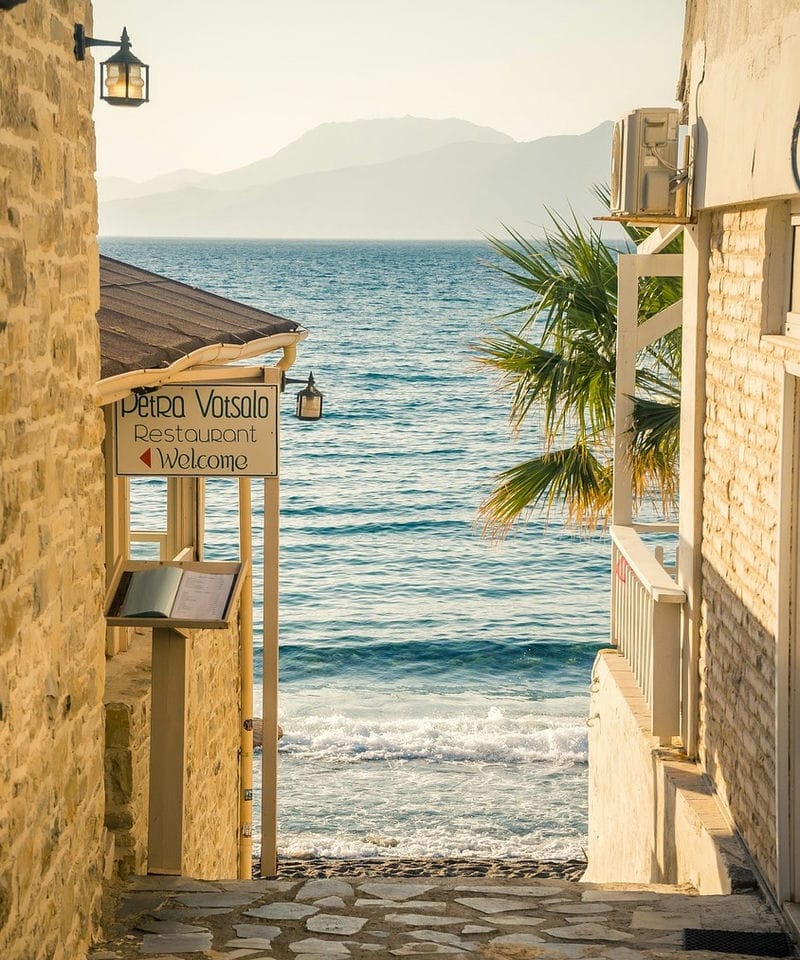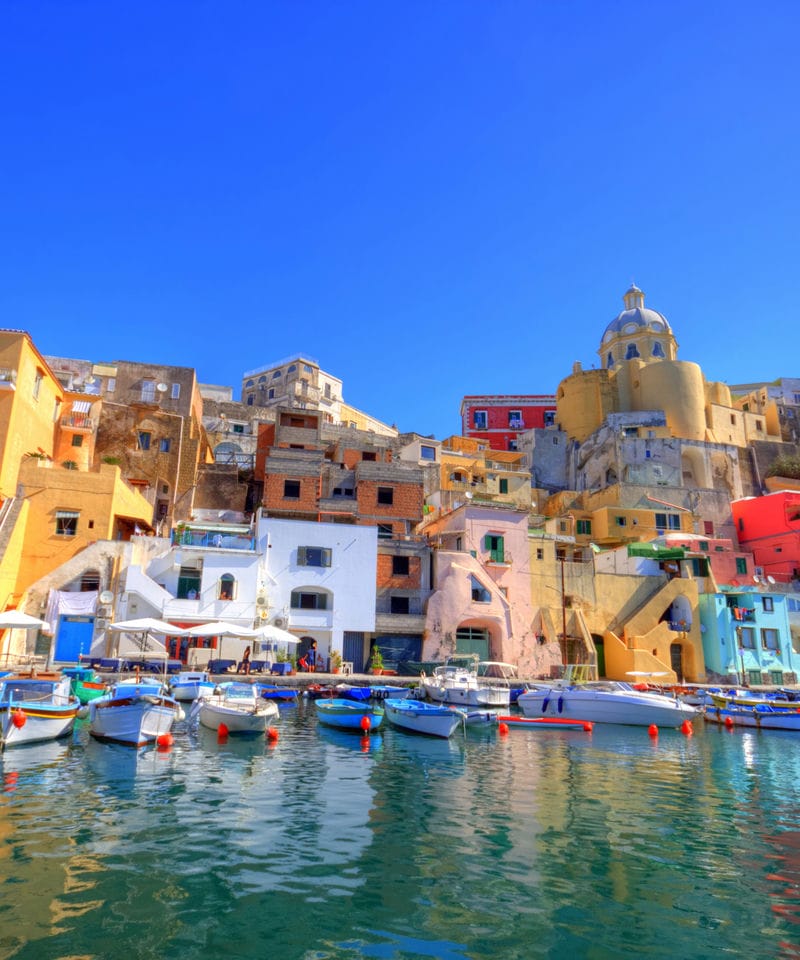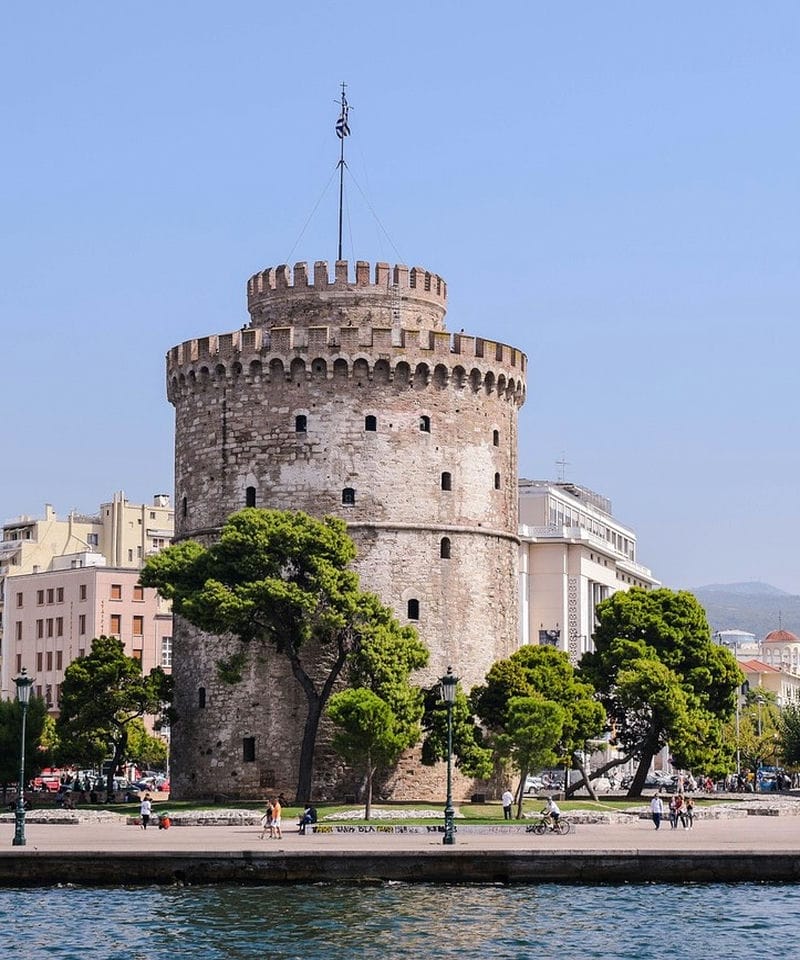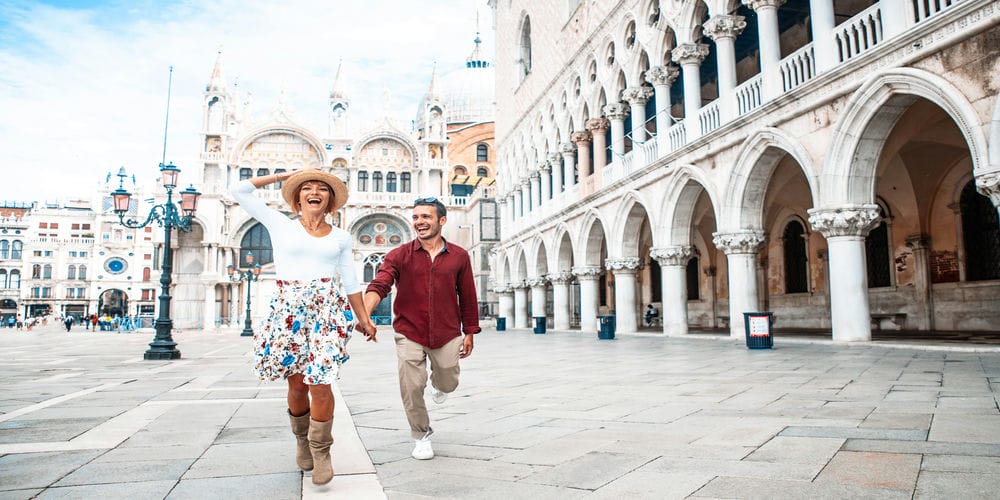
Sardinia Travel Guide: Discover Beaches, Cuisine, and Culture
Key Takeaways
- This Sardinia travel guide will make you spend your time in this part of Italy in the most efficient and fun way possible.
- Sardinia offers diverse experiences, from famous beaches to cultural sites.
- Timing and travel logistics are crucial for a smooth visit.
- Natural beauty and vibrant culture define this unique Italian island.

Sardinia is a captivating travel destination that offers an array of diverse experiences.
Located in the heart of the Mediterranean, this Italian island is renowned for its stunning beaches, rugged landscapes, and rich cultural heritage.
Whether travelers are interested in exploring ancient ruins, enjoying the vibrant local cuisine, or simply relaxing by the Mediterranean Sea, Sardinia has something for everyone willing to stay from mainland Italy.
For those considering a trip to Sardinia, understanding the best time to visit and how to navigate the island can greatly enhance the experience.
With convenient airports and a variety of accommodations, visitors can easily plan their stay to maximize relaxation and adventure.
The island's beautiful coastal towns and tranquil villages provide a perfect backdrop for uncovering its charming traditions and flavors.
The unique blend of natural beauty and cultural richness in Sardinia makes it an ideal spot for a memorable vacation.
From outdoor adventures to culinary delights, every aspect of Sardinia promises an engaging and fulfilling journey.
Discover why this island is a must-visit on every traveler's list.
Best Time to Visit Sardinia

Sardinia, located in the Mediterranean, is known for its amazing beaches and cultural sites. The climate varies, providing different experiences based on the time of year.
Tourists enjoy visiting during peak summer months, but off-peak times offer unique benefits.
Overview of Sardinia's Climate
Sardinia enjoys a Mediterranean climate with hot, dry summers and mild, wet winters. Summers, particularly in July and August, see temperatures soaring, making it ideal for beach lovers.
Winters are cooler with average temperatures ranging from 50°F to 60°F, providing a quieter setting for visitors.
Spring and autumn are mild and inviting, offering a pleasant atmosphere for outdoor explorations like hiking.
The island's varied climate allows visitors to enjoy different activities throughout the year.
Best Seasons for Different Activities
For beach activities, summer is prime time, even though most famous beaches are crowded.
Spring and fall are best for those interested in hiking and exploring archaeological sites due to milder weather.
Some visitors prefer rainier months for indoor cultural experiences, such as museums and local festivals.
Winter caters to travelers seeking solitude and more tranquil stays.
Peak Tourist Seasons vs. Off-Peak Benefits
Tourism peaks in July and August, when Sardinia's white sandy beaches are bustling. This period promises vibrant nightlife and numerous events.
However, peak season comes with higher accommodation costs and the challenge of crowded sites.
Visiting during off-peak months like late spring or early autumn offers relaxed sightseeing experiences, lower prices, and fewer tourists.
Off-peak visitors can enjoy more intimate views of Sardinia's cultural and natural attractions, making it an appealing option for those seeking tranquility.
How to Get to Sardinia

Traveling to Sardinia offers beautiful scenery and fascinating places to discover. You can reach the island by air or sea, with several options to suit your needs.
Explore different transport methods to find the best fit for your journey.
Flights to Sardinia
Flying is the quickest and simplest way to reach Sardinia. The island has three main airports: Cagliari Elmas Airport (CAG), located in the south; Olbia Costa Smeralda Airport (OLB), positioned in the northeast; and Alghero-Fertilia Airport (AHO), found in the northwest.
Many international flights first land in major Italian cities like Rome or Milan, where travelers can catch a connecting flight to Sardinia.
Plane tickets can be affordable, especially if booked in advance. Upon arrival, renting a car or using airport shuttle services can provide convenient transportation around the island.
Ferries and Other Transportation Options
Ferries offer an alternative travel method to Sardinia, particularly if you wish to bring a car.
Ferries depart from various ports on the Italian mainland, including Genoa, Livorno, and Civitavecchia. Passengers can enjoy a scenic ride across the Mediterranean.
Ferry services provide night trips and daytime journeys, letting travelers choose according to their schedule. Onboard amenities, such as dining options and comfortable cabins, enhance the experience.
Besides ferries, some visitors might opt for a private boat trip or even regional train services, although trains can be slower.
Getting Around the Island
While visiting Sardinia, a rental car is often advised for maximum flexibility. The island has a network of roads leading to popular destinations and remote areas rich with natural beauty.
Though rental cars may be limited during peak season, booking in advance can secure a vehicle for your trip.
Public transport options include buses and trains, though they may not reach all attractions. A road trip can uncover charming villages and stunning coastal views at your own pace.
Whether by bus, train, or car, moving around Sardinia provides opportunities for exploration and adventure.
Where to Stay in Sardinia

Sardinia offers a wide range of stunning locations for travelers to explore. Each region boasts unique attractions, from vibrant cities to tranquil beaches.
Accommodations cater to all tastes and budgets, ensuring a comfortable stay for everyone.
Overview of Popular Regions
In the north, Costa Smeralda is well-known for its luxurious resorts and scenic views.
Porto Cervo in this area is famous for its elegant setting. Olbia serves as a gateway, featuring both vibrant city life and nearby fantastic beaches.
Cagliari, the capital in the south, offers a rich cultural scene and beautiful coastlines, such as Costa Rei and the charming town of Pula.
The Castello District in Cagliari presents a historical backdrop with its ancient architecture. To the west, Alghero provides a cozy ambiance with a touch of history.
Villasimius distinguishes itself with idyllic beaches and nature reserves, perfect for those seeking calm surroundings. Each of these regions provides a distinct Sardinian experience.
Types of Accommodations
Sardinia presents a diverse array of accommodation options.
Travelers can choose from luxury resorts like the Hotel Cala di Volpe, recognized for its world-class amenities, private beach, and stunning sea views. This is a great choice for those seeking indulgence.
Cozy bed and breakfasts and charming guesthouses are scattered throughout the island, offering a more homely atmosphere.
For budget-minded travelers, a range of affordable hotels ensures that cost doesn't limit comfort.
For those who prefer a more personalized experience, private villas are available, especially in Forte Village and beyond, offering privacy and a more intimate connection to the Sardinian lifestyle.
Recommended Places to Stay
Hotel Cala di Volpe is a top choice near Porto Cervo, offering elegance beside beautiful waters. It’s an ideal location for luxury seekers.
For cultural enthusiasts, the Castello District in Cagliari provides hotels with historical charm amidst stunning views of the city.
In Pula, accommodations offer close proximity to beaches and archaeological sites, making it a fantastic spot for exploration. It is easily comparable to the Amalfi Coast in that aspect.
Villasimius is notable for stylish seaside resorts, perfect for unwinding.
Forte Village caters to families, with comprehensive facilities ensuring an enjoyable stay for all ages.
Top Things to Do in Sardinia

Sardinia offers a diverse array of activities that suit history buffs, nature lovers, and those looking for relaxation.
From stunning beaches to ancient ruins, the island has something for everyone seeking adventure or a peaceful retreat.
Beaches
Sardinia is famous for its sandy beaches with crystal-clear waters. Costa Smeralda is one of the most popular, known for its luxury resorts and stunning views.
La Pelosa Beach offers shallow waters perfect for families.
Cala Luna is a picturesque spot, surrounded by cliffs and caves, accessible by boat or a scenic hike. These beaches are ideal for swimming, snorkeling, or just soaking up the sun.
Historical Sites
The island is rich in history, with many fascinating sites to explore.
Su Nuraxi is a Bronze Age archaeological site worth visiting.
The ancient city of Nora offers ruins from the Phoenician and Roman times.
Visitors can also explore historical landmarks like the Cagliari Cathedral and the Archaeological Museum. Each site offers a glimpse into the island’s past, showcasing the influence of the Romans, Carthaginians, and Pisans.
Outdoor Activities
Outdoor enthusiasts can enjoy various activities.
Hiking trails along granite cliffs provide breathtaking views, especially around Porto Flavia.
The island also offers unique spots such as the Grotta di Nettuno, a stunning sea cave accessible by boat, or a long staircase.
Exploring Castelsardo, a charming town built on a rocky hill, is another adventure. These activities let visitors experience Sardinia’s natural beauty and rich history.
Sardinia's Best Beaches

Sardinia boasts some of the most stunning beaches in the Mediterranean, known for their white sands and clear waters.
Visitors can explore famous spots like Poetto Beach and Chia Beach, each offering unique scenery and beach activities.
The coastlines vary from rugged cliffs to gentle dunes, providing diverse experiences for every beachgoer.
Overview of the Most Beautiful Beaches
Sardinia's beaches are celebrated for their natural beauty and variety. Here are our favorite picks for our guide to Sardinia.
Poetto Beach in Cagliari is among the most popular, with a lively atmosphere and plenty of amenities. It's perfect for swimming and sunbathing.
Chia Beach, to the south, offers soft sand and shallow turquoise waters, making it ideal for families.
In the north, La Pelosa Beach near Stintino is famous for its crystal-clear waters and scenic views.
The east coast features coves with dramatic cliffs and hidden beaches, great for adventurous travelers looking to explore the island's rugged side.
Tips for Visiting the Beaches
When planning a trip to Sardinia’s beaches, timing is key. The best months to visit are from May to September when the weather is warm and sunny.
Arrive early at popular beaches like Poetto or Chia to secure a good spot, especially in peak season.
Consider renting a car to fully explore the island, as many of the best beaches are only accessible via smaller roads.
Packing essentials such as sunscreen, a hat, and plenty of water ensures a comfortable day at the beach.
For those looking to snorkel or explore underwater, bringing your own gear is recommended, as rentals may not always be available.
Beach Amenities and Activities
Many of Sardinia's top beaches come with excellent amenities. Poetto Beach is well-equipped, featuring restaurants, bars, and showers.
It's a great spot for windsurfing or sailing lessons, and there are bike rentals for those who wish to explore further along the coast.
At Chia Beach, visitors can enjoy beachside cafés and loungers for relaxation.
It's also a popular place for kayaking and paddleboarding, offering calm, shallow waters.
For those who seek quieter experiences, some secluded beaches on the Costa Smeralda provide fewer facilities but offer pristine environments perfect for nature lovers and photographers.
Sardinian Cuisine: What to Eat

Sardinian cuisine offers a rich tapestry of flavors shaped by its Mediterranean surroundings and cultural influences.
Visitors can enjoy traditional dishes that reflect the island's history, seafood specialties fresh from the sea, and vibrant food markets filled with local delights.
Traditional Dishes to Try
Pane Carasau is a thin, crispy flatbread, perfect as a snack or to accompany meals. Known as "music paper bread," it can be found in most Sardinian homes.
Culurgiones, pasta with a unique design, is stuffed with potato, cheese, and mint, offering a savory taste of home-cooked tradition.
Porceddu, a suckling pig roasted to perfection, is a must-try for those who enjoy hearty, meaty dishes.
Popular Seafood Dishes
Sardinia's coastline provides a bounty of fresh seafood. Fritto Misto di Mare is a local favorite, featuring fried mixed seafood such as shrimp, squid, and small fish, seasoned lightly to highlight their natural flavors.
Bottarga, cured fish roe typically from mullet or tuna, is often grated over pasta for a burst of umami.
Aragosta alla Catalana, or lobster Catalan style, is a luxurious dish combining lobster with tomatoes and onions.
Recommended Restaurants and Food Markets
Cagliari, the capital, offers several must-visit spots like Antica Cagliari for traditional meals and Sa Domu Sarda for a homely feel.
Alghero's Trattoria Carabassa showcases seafood specialties.
San Benedetto Market in Cagliari, bustling with local produce, provides an authentic taste of Sardinian life.
Olbia's Mercato Civico is another vibrant spot, where visitors can sample and purchase local cheeses, meats, and wines.
Cultural Experiences in Sardinia

Sardinia is vibrant with its festivals, unique crafts, and age-old customs. Visitors can enjoy annual celebrations, shop for handmade souvenirs, and immerse themselves in traditions that have been passed down through generations.
Festivals and Events
Sardinia is famous for its lively festivals, which showcase the island's cultural richness and community spirit.
Autunno in Barbagia is a notable event, celebrated in the Barbagia region. During this time, local villages open their doors to visitors, offering tastings of wine and traditional foods.
The Mamoiada Mamuthones is another unique event. Participants wear traditional masks and bell-adorned costumes, marking an important winter celebration.
In summer, festivals like L'Ardia di San Costantino highlight Sardinia's historical and religious significance through thrilling horse races.
These festivals give insight into Sardinian customs and the islanders' love for storytelling, music, and dance. They provide an excellent opportunity to engage with local culture and witness traditions firsthand.
Local Crafts and Souvenirs
Sardinia has a strong tradition of craftsmanship, where visitors can find unique items that reflect the island's heritage.
Handwoven textiles, such as tappeti and intricate lacework, are popular among tourists. These items often feature vibrant colors and patterns inspired by the island's landscapes and history.
Ceramic art is also prominent, with artisans creating beautifully decorated pottery and figurines.
Jewelry made from gold, silver, and coral is another highlight, often crafted using traditional techniques passed down through generations.
Sardinia's local markets are perfect for purchasing these authentic items. They provide a chance to support local artisans and take home a piece of the island's culture.
The craftsmanship seen here is not just a trade but an expression of Sardinia's artistic soul.
Sardinian Traditions and Customs
Sardinian culture is deeply rooted in its traditions and customs, many of which have been preserved over centuries.
Canto a tenore, a form of throat singing, is an important part of Sardinian music. This UNESCO-recognized singing style involves a quartet performing harmonized songs that tell stories of everyday life.
Food plays a critical role in Sardinian customs. Traditional dishes like porceddu (roast suckling pig) and pane carasau (crispy flatbread) are staples in Sardinian cuisine, enjoyed during family gatherings and celebrations.
The island's customs often reflect a strong sense of community and respect for nature.
Practices around farming and fishing, for instance, are guided by traditions that promote sustainability and honor the island's resources.
These customs are essential in understanding Sardinian identity and provide insight into the values that shape this remarkable island.
Day Trips and Excursions

Sardinia offers fascinating day trips, each serving a unique taste of the island's beauty and culture. Discover ancient ruins, stunning landscapes, and captivating art.
La Maddalena Archipelago
La Maddalena Archipelago is a must-visit for its crystal-clear waters and beautiful islands. Located in the northeast of Sardinia, it is most easily explored by boat tours.
Visitors often start from Palau, taking a guided or self-navigated tour.
Tours typically include stops at several islands where travelers can enjoy swimming and sunbathing. Spargi and Budelli, known for its pink sands, are popular choices.
The island of Caprera is also part of the itinerary for many tours, offering serene beaches and historical sites.
Best visited in summer, this excursion provides memorable views and an opportunity to connect with nature.
Gorropu Gorge
Gorropu Gorge, one of the deepest canyons in Europe, is a haven for hikers and nature enthusiasts. Situated in central-eastern Sardinia, this natural wonder is often compared to the Grand Canyon but with its unique Mediterranean touch.
Adventurers can take various trails, ranging from moderate to challenging, providing beautiful views of rugged cliffs and diverse flora.
The longest trails showcase soaring rock walls that reach up to 500 meters high.
Guided tours are available and recommended for those unfamiliar with the terrain.
Sturdy footwear and ample water are essential due to the rocky paths and sometimes harsh conditions. The gorge also offers a chance to spot rare species like the golden eagle.
Orgosolo Murals
The village of Orgosolo is famous for its vibrant murals that are spread across its buildings. Once a town known for banditry, it has transformed into an open-air gallery showcasing political and cultural art.
The murals began in the 1960s, often depicting social themes or historical events.
A walking tour is one of the best ways to explore the art, allowing visitors to appreciate the intricate details and powerful messages.
Throughout the village, cafés and shops provide a taste of local life while being within walking distance from one another. Orgosolo is not just about art; it's a peek into the heart of Sardinian culture and community.
Practical Travel Tips for Sardinia

When visiting Sardinia, understanding the local currency, language, and safety measures can enhance the travel experience. Additionally, considering travel insurance is crucial for peace of mind.
Currency and Budgeting
Sardinia uses the euro (€) as its currency. Travelers should exchange money before arriving or use local ATMs, which are widely available in towns and cities.
It is wise to carry some cash, especially when visiting smaller towns or local markets where card payments might not be accepted.
Budgeting for a trip to Sardinia involves planning for dining, transportation, and activities.
Restaurants can range from budget-friendly to high-end. Travelers may find it cost-effective to dine at local trattorias, where delicious Italian meals are offered at reasonable prices.
For transportation, renting a car is often recommended to explore the island fully. Public transport is available but may not reach all remote areas. Visitors should set aside funds for fuel and parking when driving.
Language and Communication
In Sardinia, Italian is the official language, but many locals also speak Sardinian, a distinct regional language.
Most people in tourist areas speak some English, but learning a few Italian phrases can be helpful and appreciated by locals.
Visitors should consider downloadable translation apps or carry an Italian phrasebook to help navigate conversations in less touristy areas.
Simple greetings like 'Ciao' (hello) or 'Grazie' (thank you) can go a long way in making connections and showing respect for the culture.
Signage is usually in Italian, so understanding basic words can assist in navigating roads and public transport.
Staying connected via mobile is easy as well, with reliable SIM cards and data plans available for purchase at the airport or city centers.
Safety Tips
Sardinia is generally a safe destination, but travelers should take typical precautions.
- Pickpocketing can occur in crowded areas, so keeping valuables secure and being aware of surroundings is important.
- When exploring nature spots such as beaches or hiking trails, carry plenty of water and sun protection, especially in the summer months.
- Always inform someone of your plans if venturing into remote areas.
- In the event of an emergency, knowing the local emergency number is vital. The European Union's emergency number, 112, can be dialed for police, fire, or medical assistance.
Travel Insurance
Obtaining travel insurance is advisable for anyone visiting Sardinia.
It can cover unexpected events such as medical emergencies, trip cancellations, or lost luggage.
Reviewing policy details to ensure coverage for specific activities planned during the trip is important.
Many insurance packages provide 24/7 assistance, which can be very beneficial in unfamiliar surroundings.
Before purchasing, travelers should compare different providers to find coverage that meets their unique needs and offers adequate protection for the duration of the journey.
Final Thoughts

Sardinia stands out in the Mediterranean with its unique charm and beauty.
Its breathtaking beaches, rugged landscapes, and rich history make it a sought-after travel destination.
Travelers can explore the island's diverse offerings.
From the stunning coastlines to the vibrant local culture, Sardinia provides a mix of activities for different interests.
Local guides can enhance the experience by showing hidden gems and sharing cultural insights.
They offer travelers a chance to see Sardinia from a different perspective, adding depth to their journey.
On a trip to Sardinia, visitors can try local cuisine, discover charming villages, and enjoy the welcoming atmosphere.
It's a place where history and natural beauty blend seamlessly, inviting exploration and relaxation.












